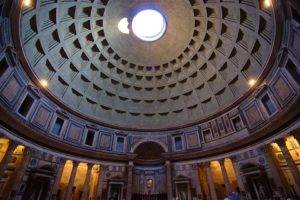It’s nice to meet other Expats in Rome and make friendships, but keeping them is the problem. The change over for Expats in Rome is 3 to 6 months, depending on your visa limitation and the difficulty of getting a visa makes it illegal to stay. Sadly, most expats leave and some come back! Others get lucky and acquire citizenship or get married. There is a small percentage of Expats in Rome that have been here +5 years. This month we will be reaching out to them and finding out how and why!
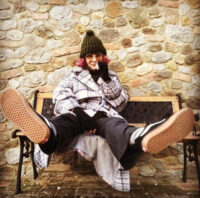
These expats have opened their own businesses, retired or also fallen in love! Mazen & Carolyn met in Rome and now in the US, what happened to these 2 study abroad expats? We have their story here “An Italian love story… between expatriates”.
Patrizia Di Gregorio, our founder has been living in Rome since 2000. If you do not know her story. Get inspired by how she was deported back to Italy! ( listen to her podcast video interview).
John Henderson retired in Rome, and has a blog about not just retiring in Rome. John has traveled to 107 countries and has written travel stories from nearly half of them. On Jan. 5, 2014 he retired after nearly 40 years as a sportswriter, the last 23 with The Denver Post, and moved to Rome.
Shirley Lawson is a perfect example of an Expat… she has to live in Italy! Shirley ONE of the first expats in Rome members! She moved from Scotland, where she’d been a successful model and a TV actress. She was a mess, like most of us so don’t feel you are alone, especially now with Covid19 restrictions making it even harder for Expats to connect! Watch this 2 minute video where Patrizia, Shirley and others share their feelings back in 2007. Shirley talks about how difficult it was for her to learn the language! Back then with her Scottish accent even the Americans couldn’t understand her!
Let’s talk more about Shirley, remember she is the ONE that can’t let go! She moved to Rome in 2002 where she stayed for 8 years before moving to Dubai for another 8 years. When in Dubai she wanted to move back to Rome or Italy again! She invested in property and opened “Podere Umbro Guest Houses – Città della Pieve, Italy” where we often organize events in the summer! The last 4 years, she has been spending half the year in Umbria and half in Dubai where she’s had her own business as a photographer “Diva Boudoir Photography by Shirley Lawson”. She brought Boudoir photography to the Middle East and only shoots mature women for the last 12 years!
More about Shirley! She loves to travel, but not just to visit other countries but to live there and experience them in their reality and not just when you’re on vacation. So when the opportunity came to go to Rome she jumped at it. She’d been to Rome many times and loved it! Her boyfriend at the time was Italian and they’d had a 4-year long-distance relationship, Her older sister and brother both married Italians so she also spent loads of vacations there as a child. She loved the language, the food, the culture, the weather and fashion of the whole package. Her mother is Greek so the whole Mediterranean thing wasn’t new.
Was it hard living in Rome? It’s fucking hard living in Rome… at first. And that first lasted a long time, well for me it did, it took me a good 3 or 4 years to feel I was somewhere I could actually live. I mean everything in life takes time, doesn’t it? Grief, broken heart, any kind of trauma will eventually diminish with time, so I stuck it out. I also had the added incentive of having two young kids who settled into school and Italian life almost immediately and you’re only ever as happy as your kids are, right? My special needs boy was getting all the care he could possibly get and that was a huge plus.”
You were driving on the other side of the road in your country. Were you able to drive in Rome? I’m a pretty confident driver, the kind of woman who shouts at other drivers to get a move on or rolls my eyes at women, sorry women but it is mainly you guys, who can’t park. But fuck me. Rome is a whole other ball game. It’s the Wacky Races out there! Firstly, there’s the small problem of learning to use the car on the other side and drive on the other side too. That came quickly enough for me. The most difficult part was understanding that Romans have their own rules, they follow them well, but they’re made up and belong to them only and if you’re not from Rome, you don’t know them!!! They need to be learned by trial and loads of error. Having horns blasted at you all the time and not actually knowing what you’d done wrong was so frustrating and quite frightening actually. And of course, I had to get a bike. You can’t live in Rome without driving a small motorbike around. I think I watched too many old movies and me and Audrey Hepburn were gonna be BFF’s whizzing around Rome taking in the sights together in my fantasy. The reality was that I’d never driven a bike. I didn’t even have a bicycle as a kid, so I was pretty shitty and car drivers were not patient. Dodging in and out of heavy traffic with centimeters to spare was bloody terrifying. But we don’t experience anything if we stay in our bubble of comfy, do we? But I wasn’t feeling it, and I was feeling that I might just be failing.
What did you miss from your country? I missed food! I know that sounds crazy to say when you live in Italy but Italians are soooo traditional with their food that that’s all you can have! I think times have changed since then and world cuisine is now available in Rome, but in the early years you literally had Italian food and nothing else. In restaurants, in supermarkets, it was only Italian. And as much as I love it, enough is enough and I just wanted a Mexican, Chinese or an Indian meal every now and again! I couldn’t even find ingredients to make my own at home. I’m back in Italy again now for the lockdown and it’s a tiny town, so I’m basically back to Rome 20 years ago haha, i can’t find anything to eat but Italian (laughs). God, I love to punish myself, don’t I?
Other clubs or activities you joined in Rome? I joined the English Theatre of Rome, I built and painted sets, I was an in-house photographer, I did readings for young new playwrights on balmy summer nights on the roof terrace of the theatre’s director drinking wine and eating her amazing pasta, and I thought yeah, this is ok. This is what I imagined Rome to be. I was also shooting fashion in my photography, Rome has the best backdrop scenery in the world for this!
How did you make friends and connections? My first real friendships were when I found Expats in Rome group on MSN. ‘’Expats living in Rome’’ I read online, hey that’s me! It was so lovely to chat with other expats and bitch about our struggles. Of course, being married to an Italian I didn’t have anyone to bitch to about how bloody hard it is to live there! Poor guy hadn’t a clue what my problem was. The bureaucratic system was nothing I had ever experienced, but that’s a whole other interview. But now, with E.I.R, I could message new friends and see if they wanted to grab a beer or a pizza. A whole new world, and the odd Tuesday and Saturday night, I could hop on my bike and meet up with the Expat meet ups where there were always people you knew and loads of like-minded people you didn’t know. Expats are a breed apart from normal humans. They’re ballsy and not afraid to take chances. Unless they’re expat spouses who’re just following their husband/wife around for their job, they’re a different kettle of fish. But real expats are people who’ve packed up their lives and everything they know, left their friends and family, put everything they own into storage and sent other things in crates overseas to meet them months later, all on the hunch that if nothing else happens it’s a new experience. I really am grateful for the expat community all over the world. The personalized ones are better but they have international organizations that also offer the same more or less. The best thing is to join them and get all they offer, make connections and pick your friends that are going to live in that country for a while.
So what was really going on with learning Italian? Did you finally have a conversation or not? I eventually picked up enough Italian to get by when shopping and if they didn’t understand me, I didn’t give a fuck anymore HA! I’m fine now of course.
What about Umbria? Has to be lonely out there miles from nothing…. That, and buying the derelict farmhouse back in Umbria 4 years ago and restoring it ourselves, that’s a whole other blog too…haha! But it’s beautiful here, such a stunning part of the world and close enough to nip to other cities, including Rome!!
What about Dubai? I can’t think of a city more extreme and on the complete opposite side of the spectrum than Rome is to Dubai. But Dubai expat life is a whole other story and interview…
Want to know more about Shirley? Follow here on INSTAGRAM @shirlz_law @divaboudoir.by.shirley
Podere Umbro Guest Houses – Città della Pieve, Italy @podereumbro
We asked Shirley to participate in “Real Expats Stories on Wednesday January 20@21:00 on line” only 4 max can join each story.
Coronavirus: a new decree signed overnight by the Prime Minister Giuseppe Conte and published in the Official Journal contains more stringent measures to contain the spread of the virus in Lombardy and in 14 other provinces where the number of infections are greater.
A series of other measures are valid throughout the national territory. Compared to the initial draft, which began to circulate yesterday evening, there are 14 provinces and not 11 provinces, in addition to Lombardy, affected by more rigorous measures to contain the infection. These provinces are Modena, Parma, Piacenza, Reggio Emilia, Rimini, Pesaro e Urbino, Alessandria, Asti, Novara, Verbano Cusio Ossola, Vercelli, Padova, Treviso and Venezia. The measures stated in the decree are valid from today, March 8, until April 3.

RED ZONE MEASURES (Article 1 of the decree of 8 March 2020)
It is forbidden to enter and exit
Travel in and out of Lombardy and the 14 provinces stated above is prohibited. One can only move for emergencies or "proven" work needs, which must however be authorized by the prefect. Absolute ban on mobility for those who have been in quarantine.
Schools closed until April 3 - The teaching activity for schools of all levels, universities and academies is suspended until April 3.
Bars and restaurants open from 6 to 18 - The decree states an opening hours allowed for restaurant and bar services, from 6 to 18, provided that a place is able to comply with the "obligation" to ensure the interpersonal safety distance of 1 meter in the premises, with the sanction of suspension of the activity in case of violation. The suspension of exams for a driving license is also ordered.
Closed gyms and swimming pools. Derogation for games behind closed doors
The decree also establishes the closure in Lombardy and in the 14 provinces mentioned above of all gyms, swimming pools, spas and wellness centers. Outdoor sports competitions are allowed only behind closed doors (no fans). Shopping centers will have to be closed but only on the weekend. Other commercial activities, other than catering, may remain open on condition that they are able to guarantee a distance of one meter between customers. Instead, museums, cultural centers and ski resorts are closed. Contests are also suspended.
No weddings or funerals. Cinemas and theaters are closed
Civil and religious ceremonies, including funeral ceremonies, are suspended. All organized events are also suspended, as well as events in public or private places, including those of a cultural, recreational, sporting and religious nature, even if held in closed places but open to the public, such as large events, cinemas, theaters, pubs, schools dance halls, game rooms, betting rooms and bingo halls, discos and similar places.
Holidays
Whenever possible, employers are advised to encourage the use of ordinary leave or holidays by their employees.
VALID MEASURES IN THE REST OF ITALY (Articles 2 and 3 of the decree of 8 March 2020)
Schools are closed until March 15th
The teaching activity for schools of all levels and universities remains suspended until March 15th. Educational trips and school trips are suspended until April 3.
Cinemas, theaters and museums are closed
Throughout the whole national territory, the suspension of cinematographic, theatre events and events and shows of any nature "carried out in every place, both public and private". Opening of museums is suspended. The Municipality of Rome announces that it has ordered the closure of all museums, theatres and all places and institutes of culture.
Closed pubs, discos and bingo
Pubs, dance schools, game rooms, betting rooms and bingo halls, discos and similar clubs are suspended.
Bars and restaurants, gyms and swimming pools are open but with an obligation to keep distance of 1 meter between customers.
The managers of catering businesses can continue to keep the premises open, provided that they guarantee the interpersonal safety distance of at least one meter. Same goes for gyms and swimming pools, which can remain open as long as the visitors are guarantee safety distance from each other.
Limit travel
Among the preventive measures, art. 3 point C reads: "It is recommended to limit, where possible, the movement to strictly necessary cases".
Prohibition of staying in emergency rooms
Patient carers cannot stay in the emergency room waiting. Access of relatives and visitors to hospitals is also limited.
Prohibition of mobility for quarantined individuals
Even in the rest of Italy who is in preventive quarantine or has tested positive for the virus cannot move from home.
No civil and religious ceremonies, including funerals
Weddings and funerals are also suspended throughout the country.
Medical congresses suspension
Conferences, meetings and events involving healthcare personnel are suspended.
Prison visits
The decree provides for people in prisons to carry out the visits not in person but by telephone or video.
Holidays
As in the red zone, same goes for the rest of Italy, whenever possible, employers are advised to encourage the use of ordinary leave or holidays by their employees.
Public transport and sanitation of vehicles
Public transport companies will have to take extraordinary measures to disinfect their vehicles.
Communicate to ASL (national heath care company) if you come from the red zone
Anyone returning to Italy from countries at epidemiological risk must communicate it to the competent ASL office. But also those who have passed through the red zones in the last 14 days (article 5, point 2).
THE SANCTIONS
Failure to comply with the decree is punished according to the article 650 of the Criminal Code, as required by the law of 23 February, i.e. with the arrest of up to 3 months and a fine of up to 206 euros.
Original article in Italian and the PDF of the decree you can read here.
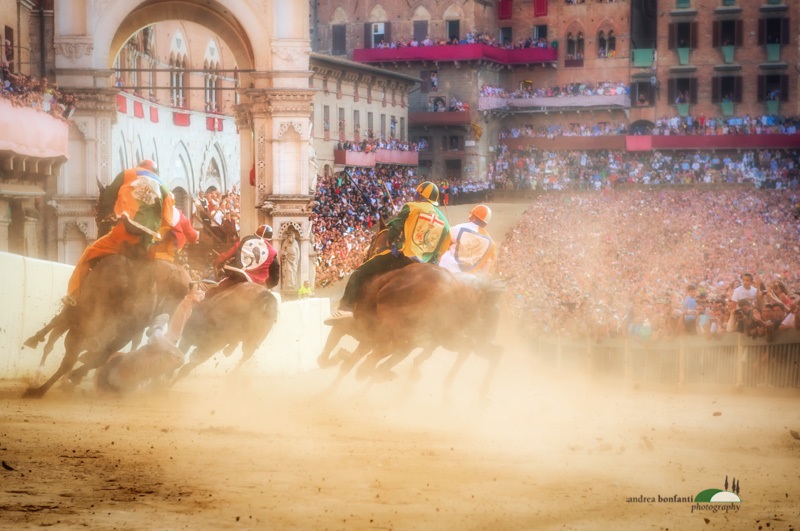
The Palio dell’Assunta: Siena’s Historic Horse Race
The Palio dell’Assunta in Siena is a historic and vibrant horse race held annually on August 16th. This event, deeply rooted in medieval traditions, takes place in the picturesque Piazza del Campo. It is one of the two Palios held in Siena each year, the other being the Palio di Provenzano on July 2nd. What […]
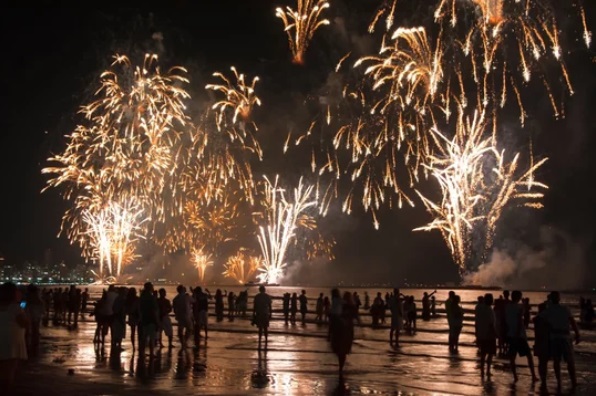
Ferragosto in Italy: What It Is and How It’s Celebrated
Ferragosto, celebrated on August 15th, is a significant public holiday in Italy that marks the height of the summer season. This ancient holiday has deep roots in Roman history and is a time when Italians come together to enjoy festive activities, travel, and communal gatherings. Understanding Ferragosto provides a window into Italian culture, traditions, and […]
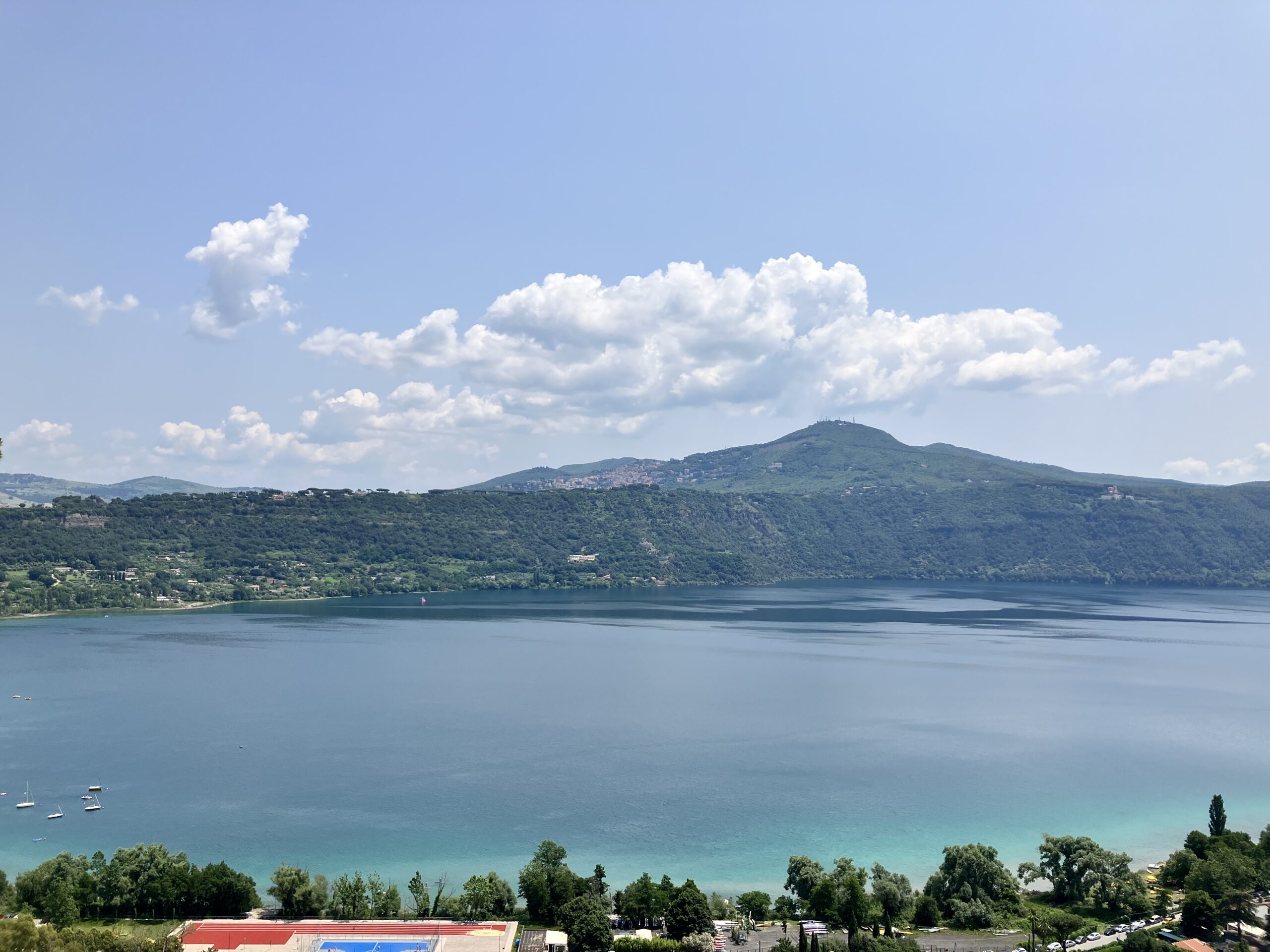
Explore The Roman Countryside: A Summer Hike In Castel Gandolfo
Guest Article written by Sal from Nature of Sal For a refreshing escape from the city heat, expats can explore the picturesque trails of Castel Gandolfo. Nestled in the Alban Hills, this charming town offers stunning views and a serene hiking experience. Discovering Castel Gandolfo Castel Gandolfo is famous for its papal palace (after all, […]
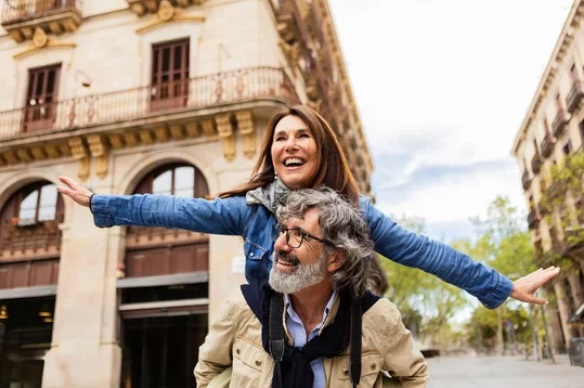
How to Benefit from Italy’s 7% Tax Rate for Foreign Pensioners
Optional Regime for Foreign Pensioners – What It Is Overview Individuals receiving pension income from foreign sources who transfer their tax residence to Italy can benefit from an optional tax regime. This regime is available to those moving to specific municipalities in Sicily, Calabria, Sardinia, Campania, Basilicata, Abruzzo, Molise, and Puglia, with populations not exceeding […]
Travelling to Rome on a budget?
Never fear – sightseeing in Italy’s magnificent capital city doesn’t have to cost the earth. Although many museums and monuments charge hefty admission fees, a surprising number of the famous sights are actually completely free. The doors of the city’s art-laden churches are flung open to all, ancient architectural wonders await around many a corner and it costs nothing to wander the historic streets, piazzas and parks. Check out our run-down of the best things to do in Rome without spending a thing:
1. Gaze heavenwards at the Pantheon, it’s an exhilarating experience to enter this iconic Roman building and look up at the largest unreinforced concrete dome ever built.
2. Pay homage at St Peter’s Basilica, the Vatican’s showcase basilica is free, though you’ll probably have to queue to get in. Once inside, look out for Michelangelo’s Pietà statue and Bernini’s baldachin (altar canopy).
3. Hang out on Piazza Navona, and enjoy the daily circus of street performers, artists and tourists acted out against a backdrop of baroque palazzi and ornate fountains.
4. People watch on the Spanish Steps, these grand stairs have long been a popular hangout – in the 1800s local beauties would parade up and down hoping to be picked as artists’ models.
5. Tell a lie at the Bocca della Verità, just keep your hands well out of the way. Myth holds that the mouth of the huge ancient face will slam shut on the fingers of anyone who fibs.
6. Throw a coin into the Trevi Fountain, according to legend, this will ensure your return to Rome. You and thousands of other people – on an average day about €3000 is chucked over people’s shoulders into the water.
7. Explore Villa Borghese, Rome’s most famous park is an oasis of shaded walkways, verdant corners and excellent museums.
8. Survey the city from Il Vittoriano, few views can top those from this massive marble monolith. You have to pay to take the lift to the top (€7) but there are plenty of free viewing spots.
9. Explore the Jewish Ghetto, this atmospheric area is studded with artisans’ studios, vintage clothes shops, kosher bakeries and popular trattorias.
10. Walk the Via Appia Antica, antiquity’s most famous road sets the perfect scene for a leisurely amble with its pine trees, Roman ruins, and eerie catacombs.
11. Lap up the atmosphere in Trastevere, this vibrant district buzzes well into the night as locals and tourists hang out on its picturesque lanes and piazzas.
12. Go on a free tour, New Rome Free Tour (newromefreetour.com) runs a daily walking tour of the historic centre.
13. Take a timeout at the Cimitero Acattolico, The last resting place of Keats and Shelley, Rome’s non-Catholic Cemetery is a serene spot to recharge your batteries.
14. Learn about Rome’s war at the Museo Storico della Liberazione, Rome’s Nazi occupation is recounted at this chilling museum housed in what was once the city’s SS headquarters.
15. Marvel at the mosaics in the Chiesa di Santa Prassede, the sparkling Byzantine compositions in this easy-to-miss church are among Rome’s most impressive.
16. Admire modern architecture in EUR, a highlight of the southern district is the Palazzo della Civiltà del Lavoro, a masterpiece of Italian rationalism known as the Square Colosseum.
17. Experience religious ecstasy at the Chiesa di Santa Maria della Vittoria, this roadside church is the unlikely setting for one of Italian baroque’s great masterpieces, Bernini’s Ecstasy of St Teresa.
18. Find architectural perfection on the Gianicolo hill, Bramante’s Tempietto (little temple) is considered the first great building of the High Renaissance.
19. Search out the Arco degli Acetari, discover the picture-perfect medieval courtyard hiding behind the dark Vinegar-Makers’ Arch (Via del Pellegrino 19).
20. Meet Moses at the Chiesa di San Pietro in Vincoli, Michelangelo’s muscular Moses is the star turn at this 5th-century church. Also here are the chains that St Peter supposedly wore in captivity.
21. Peek through the keyhole of the Priorato dei Cavalieri di Malta, and you’ll see St Peter’s dome perfectly framed at the end of a hedge-lined avenue.
22. Partake in the passeggiata, Head to Via del Corso and join the locals on their early-evening passeggiata (stroll).
23. Catch a Caravaggio at the Chiesa di San Luigi dei Francesi, better still, catch three. This baroque church is home to the St Matthew cycle, a trio of the artist’s earliest religious paintings.
24. Get into the swing on Campo de’ Fiori, by day, poke around the much-loved market; at night, grab a drink and see in the small hours with hundreds of like-minded revellers.
25. Seek light relief in the Quartiere Coppedè, with its turreted villas, fairytale towers, gargoyles and arches, this Art Nouveau neighborhood stands in contrast to Rome’s more serious sights.
26. Watch the world go by on Piazza del Popolo, there’s always something going on on this grand neoclassical square. Nearby, the art-rich Chiesa di Santa del Popolo is well worth a look.
27. Do a double take at the Teatro di Marcello, a dead ringer for the Colosseum, this ancient stadium looms over the Area Archeologica del Teatro di Marcello e del Portico d’Ottavia.
28. Investigate a crime scene at the Largo di Torre Argentina, modern investigators have identified the spot where Julius Caesar was murdered. It was in the Area Sacra on Largo di Torre Argentina.
29. Take in a concert during Estate Romana, Rome’s big summer event stages everything from concerts and dance performances to book fairs and late-night museum openings. Some are free.
30. Check out Piazza del Campidoglio, on the Capitoline Hill, Michelangelo’s exquisitely designed piazza is one of Rome’s most beautiful public spaces.
31. Look up at Trajan’s Column, this ancient landmark towers over the Imperial Forums. If you can make them out, the reliefs depict Trajan’s military campaigns.
32. Enjoy local colour in Garbatella, this sparky neighborhood presents a colourful front with its community gardens, faux baroque palazzi and red housing blocks.
33. Go jogging in the Circo Massimo, where once crowds cheered chariot racers in Rome’s largest arena, now locals come to stretch their legs.
Attractions that are free at specific times:
34. Colosseum, Palatino, and Roman Forum; first Sunday of the month.
35. Vatican Museums; last Sunday of the month.
36. All state museums; first Sunday of the month.
37. Pope’s weekly audience; every Wednesday morning.
38. Porta Portese market; every Sunday morning.
39. Palazzo di Montecitorio; first Sunday of the month.
40. May Day Concert; May 1
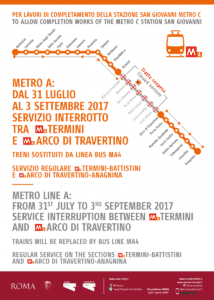 Metro A, will partially clost for work in progress from 31 July to 3 September, Service is interrupted between Temini and Arco di Travertino
Metro A, will partially clost for work in progress from 31 July to 3 September, Service is interrupted between Temini and Arco di Travertino
To allow for completion for San Giovanni station (Metro C), from July 31st to September 3rd service on Metro A is interrupted between the Termini and Arco di Travertino.
The service will continue as normal between Termini and Battistini and between Arco Travertino and Anagnina.
The Termini – Arco Travertino and vice versa are covered by the MA4 bus, which stops near each station.
The 7 stations affected are Vittorio Emanuele, Manzoni, S. Giovanni, Re di Roma, Ponte Lungo, Furio Camillo and Colli Albani direction Arco Travertino.
The MA4 line remains the same time as Metro A: first departure at 5.30, last departure at 23.30 (Sun / Thu) and 1.30 (Fri / Sat)
Link to original article in Italian
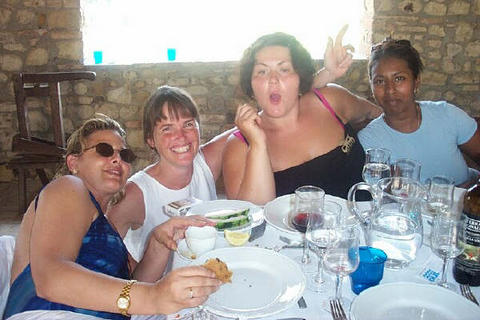
My first Expats’ photo in 2002
I like living in Rome but I don’t think I would like it in any other part of Italy!
I am Patrizia from upstate New York now living in Rome. My parents were both from Caserta, Italy and immigrated to the US when I was only an infant. I was an Expat since I was a year old.
Why Italy?
I guess it was destiny!! My mother always wanted to return to her home country and wasn’t able to do that due to a quick illness and sudden death. Our move back was canceled and we stayed in the US. I always remembered my mom talking about Italy as if it were paradise. I guess in a strange way I am fulfilling her dreams. Doing that I have learnt more about my mother and her culture.
Likes/dislikes about Italy and the Italians?
I like living in Rome but I don’t think I would like it in any other part of Italy. I have traveled and lived in other places but something draws me back here. The beauty of the city, and the nightlife, healthy lifestyle.
Has your life style changed since you moved to Rome? If yes, how?
I have been here so long that I am not sure what my old life style was 16 yrs ago 😉 I eat better and more picky about what I have. I have the convenience of having a car in the driveway or find easy parking. I adapted to things in Rome now. I am less materialistic but picked up a few superficial behaviours as well.
What is the the first thing you do when you go back to your home country?
Visit family of course, then find social networks and make new connections 😉
Does Italy/Rome seem multicultural?
Good question – I can say it is MultiCultural among those that have lived somewhere besides Italy all their lives. Rome has a meetup for foreigners and locals to meet everyday of the week. On some days there are 2 meetups for a Cultural or Language Exchange. So yes Rome is very multicultural.
Do you feel yourself integrated?
I have integrated with life here. I don’t freak out on small things. I don’t have a cappuccino after 11am anymore 😉 I dress not to stand out and put my flip flops in the trash. I sit in the post office for hours and don’t complain about it.
Could you tell us a few words about your group Rome expats?
I moved here in 2000 and in 2001 I started on a forum Expats living in Italy and there weren’t many English Speaking Expats that had access to internet so it was harder than to connect, but it was a small forum and we helped one another with information. In 2007 I started using other social media and suddenly I had a website and over 2 thousand members waiting for a meetup. We used to meet up 2 times a week for years but now it’s just once a week. With the emails coming in and managing such a large group, we have less meetups and more online help. 16 years later we have over 9 thousand members! Have a look at our video here.
Have you ever experienced any cases of discrimination/racism in Italy?
Yes… a few times in public with unpleasant remarks. I just ignore it.
Advice to a new expat in Rome? 😉
I don’t think I would have made here without a good network. I have a big network of Italian and Expat friends. It’s a referral system here in Italy. I see lots of Expats that will come to meet up and make friends with others that are living here a short time. I’d say try to make connections with those that have lived here about a year or even more.
 Anthony Majanlahti shares his story
Anthony Majanlahti shares his story
My experience of getting my residency is not the most difficult one I’ve heard of. Refugees have it worse, in fact just about everyone who isn’t an EU citizen has it harder. I can only tell my own story.
I was born and raised in Canada, of an English mother and a Finnish father. I’m a historian and writer about Rome, and obviously there’s no better place for me to live and do my research than here. However, for many years I lived here very hazardously, never sure if, once having left the country, the authorities would let me back in. I will draw a polite curtain over the stress of my life here as an extracomunitario. Temporary permessi di soggiorno for the purposes of study would expire, and have to be renewed, always from the Italian Consulate in Toronto, because they wouldn’t do it from Italy. So back I would go. And that kind of permesso didn’t give the right to work.
A few years ago, my father let me know that Finland had changed its laws to permit the children of people born in Finland to claim Finnish citizenship, probably because Finland’s population growth is negative at the moment. I didn’t have any EU citizenship rights through my mother, because the British changed their citizenship law: since I hadn’t been put on some embassy list before I was 18 years old, I had no right to British citizenship. However, now I suddenly had the right to Finnish and therefore EU citizenship. I jumped at the chance. After a surprisingly friendly and easy series of steps, I found myself clutching my prize, an EU passport. Now finally I couldn’t get sent back to Toronto.
At this point I wanted to go all the way and get my residenza in Rome. But I was perplexed. The information available online seemed contradictory and incomplete, and who knew whether or not the sites had been updated. Yet at the same time I didn’t want to go and ask anyone official – years of living dangerously had taught me an innate resistance to coming to the attention of the Italian authorities. I lived in a sort of semi-legal limbo for a long time.
My first piece of concrete advice is: if you have an EU passport, but no job, don’t be scared. There are a bunch of helpful organs ready to give you various pieces of information. I went to discuss the matter with the CGIL immigration assistance office on via Buonarroti 51, and they were very nice and gave me a lot of advice. It was also free. There was another agency of another big union, the UIL, whose offices are at via Cavour 108, near Santa Maria Maggiore, and they were even more friendly and less crowded. They too offer help and advice for free.
If you’re an EU citizen you don’t need to mess around with permessi di soggiorno or carte di soggiorno, no matter what the Ministry website says. What you want to establish is your residenza. With that, you can get your identity card and your health card, and with those pieces of identification you have official existence in Italy. You can even get a job.
Second, and this is a bit strange, but every different municipality of Rome has different requirements. As I live in Municipio I, Centro Storico, I am describing what my experience is with them. If you live in the historic centre, you are in Municipio I and you have to go down to the huge drab Fascist-era Anagrafe or Public Record Office on via Petroselli, down past the Theatre of Marcellus toward piazza Bocca della Verità. If you live in a different Municipio, check their website to see how their requirements differ: they won’t be significantly different, in any case.
Here is what you need, as an EU citizen without a contract or a job, to get your residenza:
- You need a codice fiscale, officially issued by the Agenzia delle Entrate or Tax Agency. The main Rome office is in Trastevere, on via Ippolito Nievo, 36. Getting this is easy, just turn up with your passport and fill in a bunch of forms.
- A bank statement from your Italian bank account. You have to have one of these – some banks offer accounts for foreigners. In any case, open a bank account and make sure you have the “minimo sociale” in there, which is some sort of minimal cash level to show that you won’t immediately need to sleep on the street. The amount in 2011 was €5,424.90. You don’t have to show tax documents from your home country, just a simple bank statement, as long as it’s from an Italian account and is recent.
- Your EU passport, obviously. Plus about three photocopies of it. Actually, photocopy everything, because you don’t want to find out something’s missing once you’ve been waiting for hours at the Public Record Office.
- Health insurance. I had private health insurance from Canada but you can also buy a private health plan here. You need a copy of your plan, preferably in Italian but I got away with mine in English, and several photocopies of it.
- A copy of your rental contract, or a letter from the person you are subletting from, stating that you are living there as a guest (the state doesn’t need to know you’re renting a room and won’t check if money is changing hands), along with that person’s rental contract and photocopies of that person’s identity card. Several copies of this, too.
- The Public Record Office wants to know if you’re married or single. This can be a bother to prove. For instance, I have never set foot in Finland so I was worried that the Finnish authorities couldn’t help, because as far as they know, I have seven wives and twenty-six kids. I emailed them, got a helpful email from them in English and another email address in Helsinki to write to. I wrote there and they wrote back that not only could they provide me with a “documento di stato civile”, a document proving my civil status (single), but they could send it to me IN ITALIAN. The helpfulness of the Finnish authorities almost made me cry. When I asked about how much it cost, they said they would send an invoice and I could pay upon receipt. It felt so un-Italian to be trusted like that by the state. I felt a surge of Finnish nationalism. As it turned out, though, the nice lady at the Rome Public Record Office just left all that stuff out because the document hadn’t arrived yet, and so it didn’t end up mattering. But that seemed like a matter of personal discretion on the part of the public official, so better be safe than sorry. Get some sort of document attesting to your single or married status.
- The Italians also want to know where you used to live, with some sort of official document from your home country stating your old address. But again, I didn’t have anything of the sort so I gave my mother’s address in Toronto and the nice lady at the Public Record Office just entered it in without complaint. It would be better to have something, like a letter from your home government with your name and address on it.
- Now, at this point you need either your job contract, with your last paycheck, or the dreaded partita IVA, the service tax code for independent taxable entities. The IVA is rather like the VAT in Britain or the goods and services tax in Canada, and having the partita IVA means the government expects you to pay it yourself out of your earnings. It has been raised to 21%, which is on top of your income tax of course. Since I have no contract, I had to get the partita IVA. Getting the partita IVA is super easy, rather like getting the codice fiscale which is another tax code. You just have to go to a commercialista or business manager (there are tons all over Rome and they can all do it for you), or ask the CGIL’s commercialista to do it for you, for a fee of €50. You present your passport, ask for a partita IVA, and the commercialista will ask in what sector you work. I said I worked as a translator and in cultural events, and the relevant code was soon found and entered. After about a week, the commercialista will email you your partita IVA. Everyone complains about the partita IVA. It has been described as “like having a child, but without the joy”. Apparently you have to pay an estimate on the tax that you expect to make in the next quarter, but you have to pay it this quarter. I haven’t quite figured it out. The system that was in place until January 1 of this year was called, somewhat slightingly, “per contribuenti minimi”, for minimal contributors, and it meant that if you made less than €30,000 a year (ha! I dream of €30,000 a year!) you didn’t have to go through all that rigmarole, and in fact you didn’t pay the IVA on your services at all, but the body paying you just made a “ritenuta d’acconto” or kept back 20% of what they were paying you, so they were paying the IVA and all you had to do was pay your income tax without worrying about it. Anyway it would seem that Monti’s new tax scheme has eliminated that tax program for “contribuenti minimi”, so I am in breathless anticipation to find out what is to become of me, taxwise. But. For our purposes, all you need is the partita IVA, and you can get it without much trouble.
- You also need two “marche da bollo” or government stamps, €14.62 each, which you can buy from any tabacconist’s, and two other government stamps, €0.52 each, which you can buy only from the “Cassa comunale” or City Government Cash Desk, on the first floor of the Anagrafe on via Petroselli. While you’re up there, buy the form (“modulo per la carta d’identità”) from the same desk, for €5.42. It saves you another trip up there later.
- Get some passport-sized or specifically carta d’identità-sized photos of yourself from a photo booth or photographer. Again, you won’t need them right away, but you may as well take care of it beforehand.
Make sure you have copies of everything! The Anagrafe will want the copies to keep, and will want to look at the originals, so bring it all with you.
The adventure really begins once you get to the at. It is said to open at 8.30, but by 8.30 the entrance is already crammed with a mass of people blocking your way. Sometimes someone has already made a makeshift numbering system and giving out little scraps of paper saying you’re number 16 or whatever. That makes the entrance into the Anagrafe at 8.30 slower. In any case, Bring a good book and your iPod, because chances are . Since the Anagrafe is only open in the morning, arriving after 8.30 is pointless. The bureaucracy is not fast.
Once you’re inside the Anagrafe, you will want to make your way to your , up some steps, into a large gloomy hall where you will have to decide what kind of service you want, like at the post office, and press a button to get a waiting number. You will want whatever the button is that says “”. There will probably be a helpful staff member to press the button for you if you are perplexed. However, at that point you are on your own. If your number isn’t immediately going to be called, you can exit the hall, go get a coffee and croissant at the bar inside the Anagrafe on the other side of the main entrance, and go upstairs to the Cassa comunale and buy your “” and the form (“”) for the identity card. Having done that, you will feel a pleasant sense of being armed and ready to do battle with the bureaucracy.
When your number is finally called (pay attention to the screen!), you will be brought into an office with a hopefully kindly functionary behind a desk who will ask to see your documents, may ask you questions, and will fill in a bunch of information on the computer. This functionary will tell you if there are pieces missing from your documentation – if there are, you will have to go through all of this again twice, so try to avoid missing out anything. At the end, having taken your photocopies of everything, the functionary will issue you with a wide computer-printed strip of paper, the “fascia”, which serves as a sort of interim identity document, saying in effect that your application for residenza is being processed. (You can already go to your local health authority with this “fascia” and sign up, but I waited til I had everything sorted out.) You need to bring this “fascia” back with you to get your identity card.
At this point the nice lady functionary told me, “Now all you have to do is wait for the police to come and check that you live where you say you live.”
“What?”
“Yes, you have no idea the kind of scams that people try to pull. Make sure you have your rental contract on hand and be at home when the policeman calls.”
“When will he come?”
“Oh, not within the next three weeks, I’d say,” said the functionary cheerfully. It was August. “You can certainly go on holiday without worrying.” This was all starting to look a bit haphazard and I got worried.
“What if I’m not there when he arrives?”
“Don’t worry, you’ll just have to take your rental contract and go to his office and show it to him.”
“But how is that different from showing it to you here, as I am doing now?”
“Because I am not the police,” she replied gently.
“And then what happens? Does the policeman give me a document that I bring back to you?”
“Oh, no!” she said. “The policeman sends a communication to us here, and we process it, and you come back and line up and get your identity card.”
“But how will I know when you get the policeman’s communication?”
“It usually takes about ten working days from when you see the policeman. Come back then.”
Well, I took her at her word, only to find that the police had passed by to see me when I was gone. I went to the police station on viale Trastevere, just past piazza Sonnino and before the start of via di San Gallicano, taking the piece of paper left with my concierge that gave the date and time that I should present myself at the policeman’s office. I noted that there were only two days a week when he could be found at his office, for precisely one hour, around lunchtime. I went with my rental contract, was ushered in immediately (there was no one else waiting), and a weary police officer filled in a form and glanced at my contract, and said “Congratulations. As far as the police are concerned, you are now a resident of Rome.”
“How long do I have to wait before I go back to the Anagrafe and apply for my identity card?” He laughed cynically. “All I can say is, this form will leave my office tomorrow. After that –” he spread his hands — “maybe you should wait a month or two.”
“But they told me ten days!”
“OK, OK. I can only tell you that my job ends when the paper leaves my office.”
“Well, thank you very much.”
“Welcome to Rome,” he said, already looking at another piece of paper on his desk.
I decided to wait two weeks, then risk it. This time I was smarter and got to the Anagrafe before 8 AM, and there were only about 20 or so people in front of me. I waited about 45 minutes, in high anxiety, before my number came up. I had brought my envelope with all my documents, originals and photocopies, including the “fascia” they’d given me last time. I went back into the office behind the counter, and a different functionary, but still very nice, confirmed that they had, indeed, received confirmation from the police that I was resident where I said I was, and that they could issue the identity card right away, especially since I already had the “modulo” (the form) and the photos. I handed my “fascia” over to her. After so much time and anxiety and effort, I could almost not believe it. But she put the blank identity card paper into the special printer and printed it out, then affixed one of my photos and stamped it with an official imprint. She then printed out a page entitled “ATTESTAZIONE DI REGOLARITA’ DEL SOGGIORNO PER I CITTADINI DELL’UNIONE EUROPEA” which stated that I, Anthony Majanlahti, born in.., resident in via…, of Finnish citizenship, “E’ REGOLARMENTE SOGGIORNANTE IN ITALIA”, “is staying in Italy according to the rules”. She affixed two of the “marche da bollo”, one of each kind, to one copy, and did the same to an office copy.
I left the Anagrafe with my carta d’identità, one of the old-style paper ones (“Some of the other Municipi give you the plastic card with the smart chip in it,” the functionary told me, “but it’s not free. It costs the earth!”), and couldn’t stop looking at it as I staggered up the via del Teatro di Marcello. I soon found myself in largo Argentina, and I went into a tobacconist’s to ask if I could buy a plastic cover for the identity card. “It’s my first identity card! I’m a legal resident of Rome at last!” I told the tobacconist, rather deliriously. To celebrate, he gave me the plastic cover for free.
From that point on, it was easy to get signed onto the medical system. I was in the Primo Distretto Sanitario of the ASL Roma A (which coincides with the Municipio I – check which yours is at their website, www.aslromaa.it), at via Luzzatti, 8, near piazza di Porta Maggiore. I went there with my documents, including my carta d’identità, and they filled out a quick form, took some photocopies of my passport and carta d’identità that I had already made just in case, and printed out a dummy version of my health card which would have to serve until the real one arrived by mail, a month or so later. I chose a doctor from a list of doctors near my apartment, and that was that. The real card arrived a month later and I cancelled my private health insurance. I was in the system.
Have a story to share that will help others living and working in Rome to become legal? Get the proper documents needed to make life easier? Please email us at [email protected]





